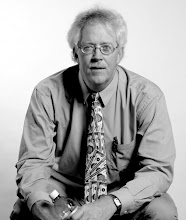On Friday morning, students gathered in a classroom at Winona State University in Winona, Minn., and in another classroom at Diné College in Tsaile, Arizona. The two classrooms were connected via Interactive Television (ITV) so the students could see and talk to each other, and view drafts of their documentary projects.
The four student teams are creating documentary features focused on four Navajo elders. Each team was nearly done with the short (3-5 minute) Media Feature project. They each will then complete a slightly longer (9-15 minute) Living History Feature.
The Living History Features will tell a bit more about each elder's life and family and a few things that are most important to each elder. The Media Features are designed to be more focused on one topic or issue.
The students have found it's quite a challenge to work on projects when team members are dispersed across the country. They have found ways to make it work, meeting and working together in person when it was possible, and using electronic ways of meeting when needed.
The first drafts of the projects look great. The personality of each elder is evident and the students are taking great care to present information about their elders accurately while maintaining interest of the viewers.
The class will meet each Friday for the next several weeks to continue to get peer input on their projects.
Once the documentaries are complete, premiere receptions will be planned at both Diné College and Winona State University-- probably in September-- to debut the projects and celebrate the work of the student teams.
The faculty members of this class, Dr. Miranda Haskie of Diné College, and me-- Dr. Tom Grier of Winona State University-- are very pleased with the student's dedication and hard work.
Thanks for reading and following the progress of this year's Navajo Oral History Project.

No comments:
Post a Comment